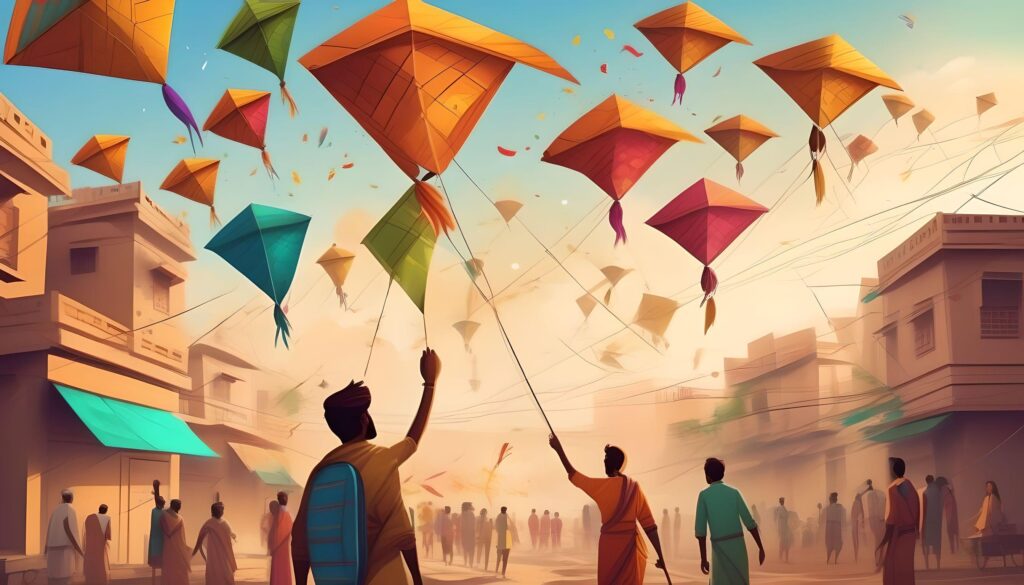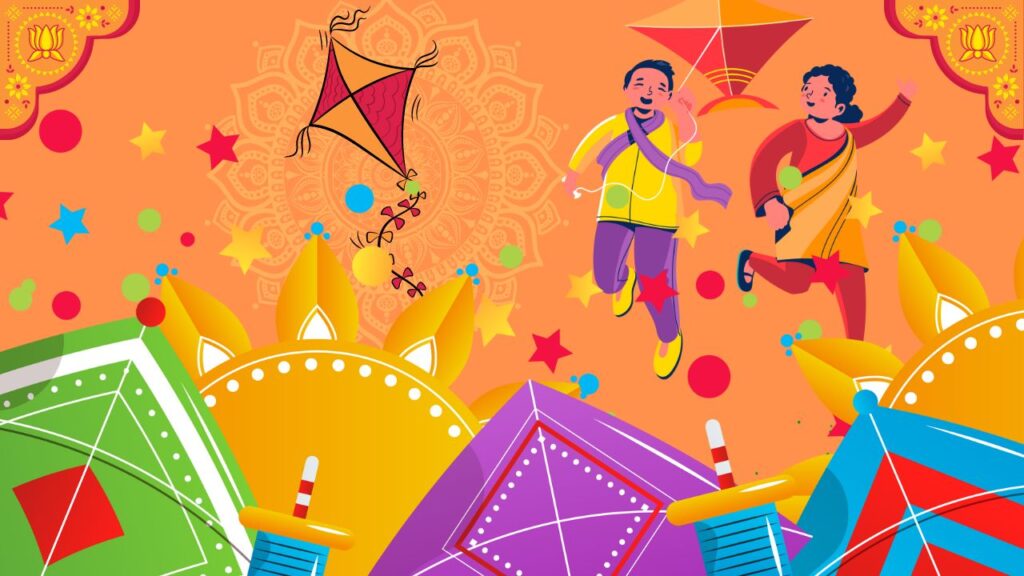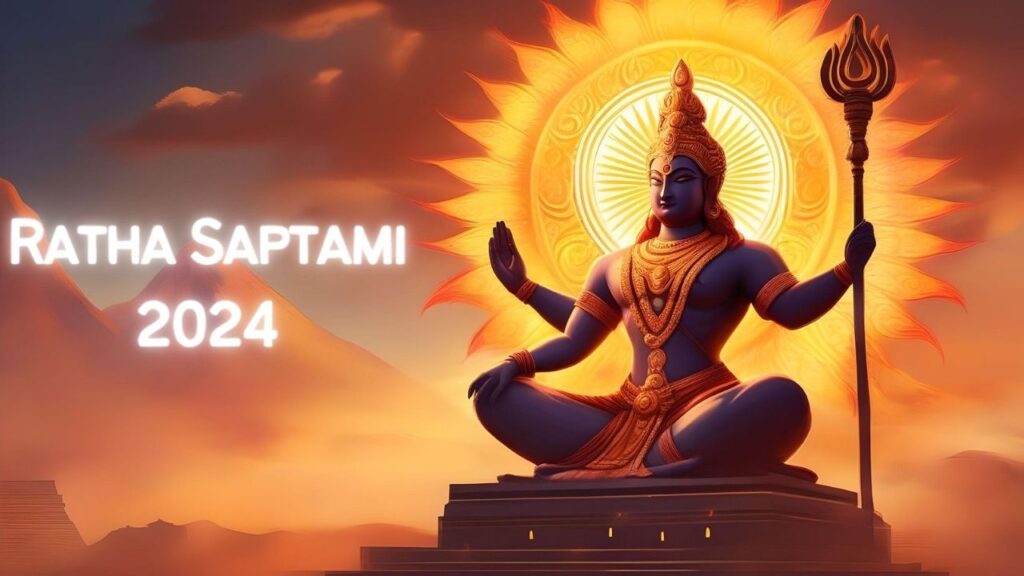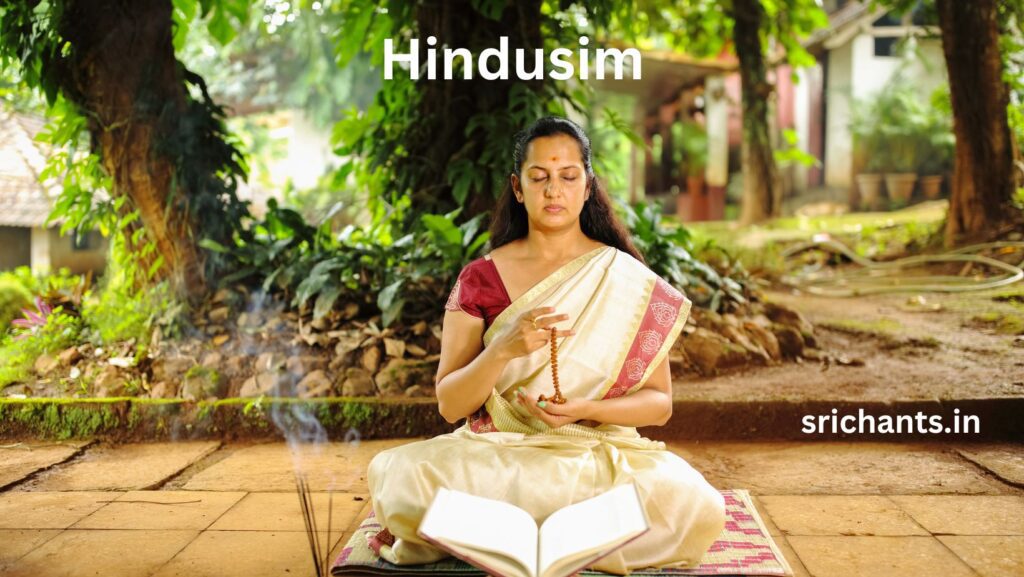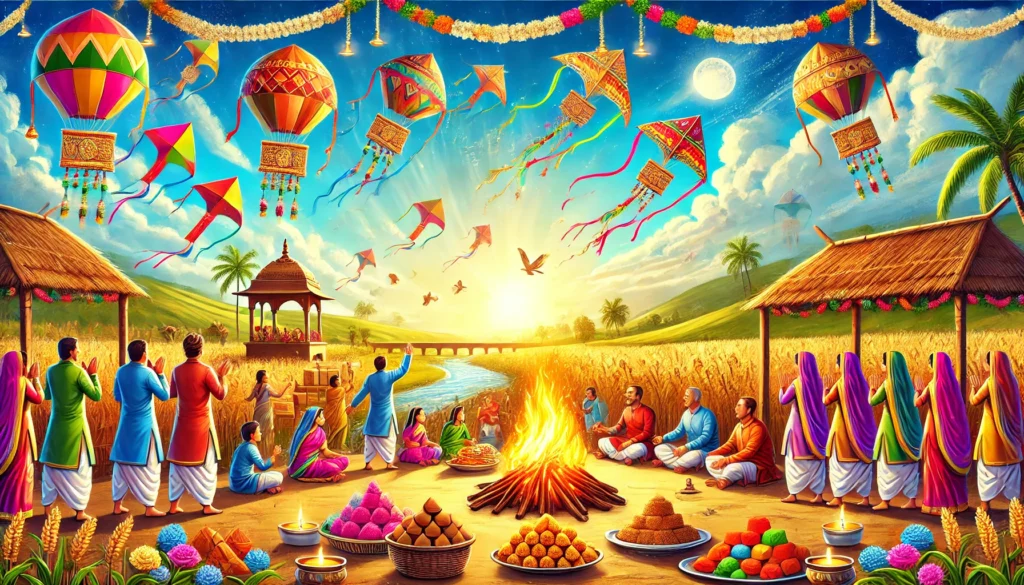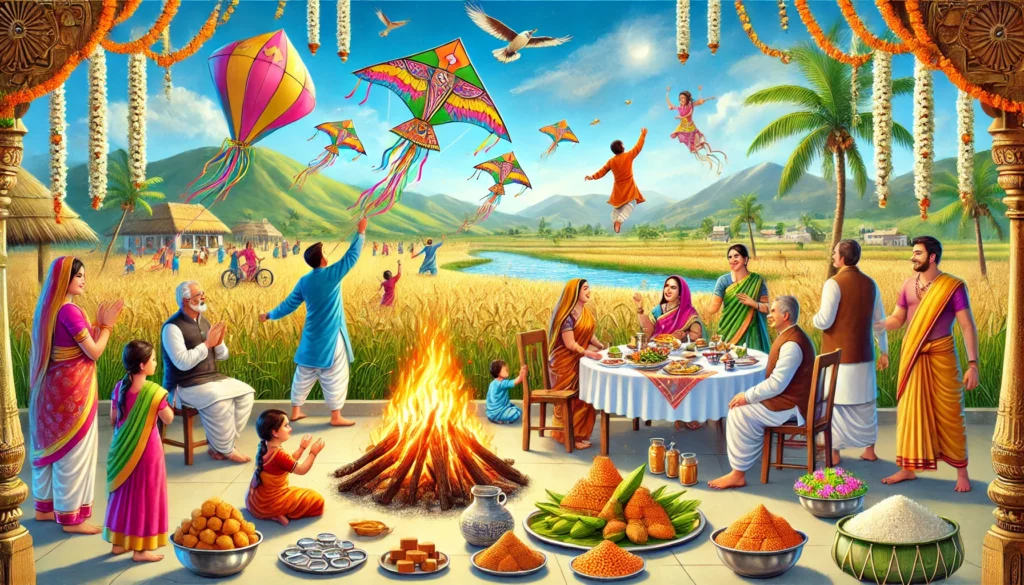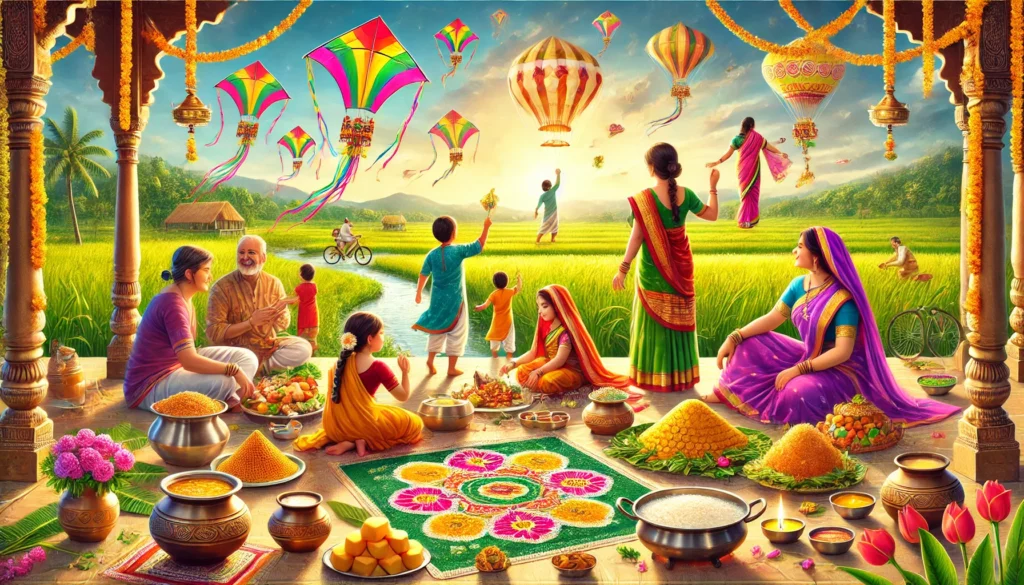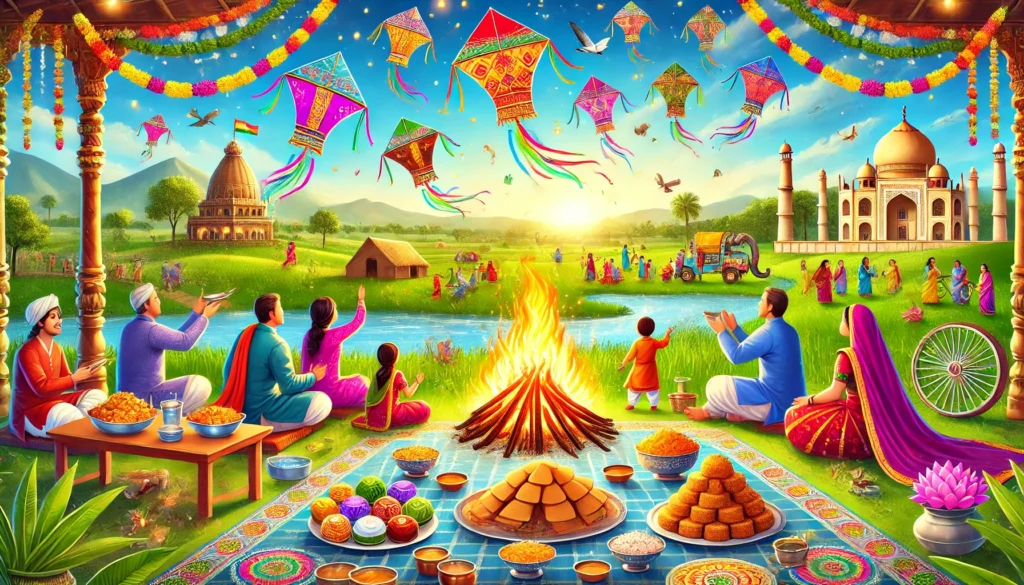List of Hindu Festivals : Sacred Spectacles : Embrace the Beauty of Hindu Festivals with This Exclusive List
List of Hindu Festival – Hindu festivals are vibrant celebrations that form an integral part of the rich tapestry of Indian culture. These festivals are not just about rituals and traditions but are deeply rooted in the religious and historical fabric of the country.
| S.No | Festival | Details |
| 1 | Diwali (Deepavali) | The Festival of Lights, celebrating the victory of light over darkness and good over evil. |
| 2 | Holi | The Festival of Colors, marking the arrival of spring. People play with colored powders and water. |
| 3 | Navaratri / Durga Puja | A nine-night festival dedicated to Goddess Durga, celebrating her victory over the demon Mahishasura. |
| 4 | Raksha Bandhan | A festival celebrating the bond between brothers and sisters, where sisters tie a protective thread (rakhi) on their brothers’ wrists. |
| 5 | Janmashtami | Celebrating the birth of Lord Krishna, with devotees fasting, singing, and engaging in Krishna-related activities. |
| 6 | Ganesh Chaturthi | Honoring Lord Ganesha, the elephant-headed deity, with the installation of Ganesha idols and cultural events. |
| 7 | Makar Sankranti / Pongal | A harvest festival marking the transition of the sun into the zodiac sign of Capricorn, celebrated with various regional names and customs. |
| 8 | Karva Chauth | A fasting ritual observed by married Hindu women for the well-being and longevity of their husbands. |
| 9 | Rama Navami | Celebrating the birth of Lord Rama, the seventh incarnation of Lord Vishnu. |
| 10 | Onam | A harvest festival celebrated in the state of Kerala, marked by traditional rituals, feasts, and cultural events. |
| 11 | Guru Purnima | Honoring and expressing gratitude towards one’s spiritual and academic teachers. |
| 12 | Maha Shivaratri | Dedicated to Lord Shiva, it is a night-long festival of fasting, prayers, and meditation. |
| 13 | Vasant Panchami | Celebrating the arrival of spring and the worship of Saraswati, the goddess of knowledge and wisdom. |
| 14 | Dussehra (Vijayadashami) | Marks the triumph of Lord Rama over the demon king Ravana and symbolizes the victory of good over evil. |
| 15 | Gudi Padwa / Ugadi | The New Year’s Day for the people of Maharashtra and Karnataka, marking the beginning of the Chaitra month. |
| 16 | Karthigai Deepam | A festival of lights celebrated in South India, dedicated to Lord Shiva. |
| 17 | Lohri | Celebrated in the Punjab region, marking the winter solstice and the harvesting of crops. |
| 18 | Baisakhi | Celebrated in Punjab, marking the Sikh New Year and the harvesting of the Rabi crop. |
| 19 | Chhath Puja | A festival dedicated to the worship of the Sun God, celebrated with rituals and offerings, particularly in the states of Bihar and Jharkhand. |
| 20 | Gangaur | Celebrated by women in Rajasthan and some other parts of North India, it honors Goddess Gauri, the consort of Lord Shiva. |
| 21 | Teej | Celebrated by women in North India, especially in Rajasthan, it marks the arrival of the monsoon season and the union of Lord Shiva and Goddess Parvati. |
| 22 | Karadaiyan Nombu | Celebrated in South India, particularly by married women, it involves a special fast and prayers for the well-being of their husbands. |
| 23 | Govardhan Puja | Observed the day after Diwali, it commemorates the lifting of Govardhan Hill by Lord Krishna to protect the residents of Vrindavan from Lord Indra’s wrath. |
| 24 | Nag Panchami | A festival dedicated to the worship of snakes, observed by offering prayers and milk to snake idols. |
| 25 | Makhan Chor (Damodara) Ekadashi | Celebrated in the Kartik month, it commemorates the childhood pastime of Lord Krishna stealing butter. |
| 26 | Hanuman Jayanti | Marks the birth of Lord Hanuman, a devoted disciple of Lord Rama and a central character in the Indian epic Ramayana. |
| 27 | Sankranti (Kite Festival) | Apart from being a harvest festival, in some regions, Sankranti is celebrated with kite flying competitions. |
| 28 | Karaga Festival | Celebrated in Karnataka, it involves a unique tradition of carrying an adorned pot on the head as a part of the procession. |
| 29 | Maha Shivaratri | Observed in reverence of Lord Shiva, this festival is marked by fasting, night-long vigils, and temple visits. |
| 30 | Bonalu | Celebrated mainly in the Telangana region, it is an annual festival dedicated to Goddess Mahakali. |
| 31 | Vat Savitri Vrat | A fasting ritual observed by married women for the well-being and long life of their husbands. |
| 32 | Naraka Chaturdashi (Choti Diwali) | Observed on the day before Diwali, it symbolizes the victory of Lord Krishna over the demon Narakasura. |
| 33 | Kanakadasa Jayanthi | Celebrated in Karnataka, it marks the birth anniversary of the saint and devotee of Lord Krishna, Kanakadasa. |
| 34 | Vishu | Celebrated in Kerala, it marks the Malayalam New Year and involves the Vishukkani, a ritual of seeing auspicious items as the first sight on the day. |
| 35 | Sitala Satam | Celebrated in Gujarat, it involves the worship of Goddess Sitala and is believed to protect against diseases. |
| 36 | Pana Sankranti | Celebrated in Odisha, it marks the beginning of the Odia New Year and involves rituals like drinking a traditional sweet beverage called Pana. |
| 37 | Bhaubeej (Bhai Dooj) | Celebrated on the fifth day of Diwali, it involves the bonding of brothers and sisters. |
| 38 | Dhanteras | The first day of the Diwali festival, dedicated to the worship of Lord Dhanvantari and Goddess Lakshmi for prosperity. |
| 39 | Holika Dahan | Celebrated on the night before Holi, it involves the ritualistic burning of Holika, symbolizing the victory of good over evil. |
| S.No | Festival | Details |
| 1 | Yugadi / Ugadi | The New Year’s Day for people in Karnataka, Andhra Pradesh, and Telangana, marking the beginning of the lunar calendar. |
| 2 | Guru Ravidas Jayanti | Commemorates the birth anniversary of Guru Ravidas, a revered saint and poet. |
| 3 | Chhath Puja | An ancient Hindu festival dedicated to the worship of the Sun God, observed primarily in the Indian states of Bihar and Jharkhand. |
| 4 | Ratha Saptami | Celebrated to honor the Sun God Surya, it marks the seventh day of the bright half of the Hindu month Maagha. |
| 5 | Kumbh Mela | A major pilgrimage and festival celebrated in a cycle of approximately 12 years at four river-bank pilgrimage sites: Allahabad, Haridwar, Nashik, and Ujjain. |
| 6 | Makaravilakku | Celebrated at Sabarimala in Kerala, it marks the Makara Jyothi, a celestial light that is believed to appear on the day. |
| 7 | Puri Rath Yatra | A chariot festival celebrated in Puri, Odisha, involving the pulling of chariots carrying deities. |
| 8 | Sri Rama Ekadashi | Dedicated to Lord Rama, it involves fasting and prayers on the eleventh day of each lunar fortnight. |
| 9 | Pradosh Vrat | Observed in honor of Lord Shiva, it falls on the 13th day of both the waxing and waning lunar cycles. |
| 10 | Vishwakarma Puja | Celebrated to honor Lord Vishwakarma, the divine architect, on the day following Diwali. |
| 11 | Tulsi Vivah | The ceremonial marriage of the Tulsi (holy basil) plant to Lord Vishnu, usually performed in Kartik month. |
| 12 | Vaikunta Ekadashi | Marks the eleventh day of the waxing moon in the month of Margashira and is dedicated to Lord Vishnu. |
| 13 | Naga Panchami | A festival dedicated to the worship of serpents, particularly observed in states like Maharashtra and Karnataka. |
| 14 | Aadi Perukku | Celebrated in Tamil Nadu, it is a festival dedicated to the goddess Parvati, associated with the fertility of nature. |
| 15 | Ganga Dussehra | Celebrated to mark the descent of the Ganges River to Earth, it involves taking a dip in the holy river. |
| 16 | Gudi Padwa | Maharashtrian New Year, marking the beginning of the Chaitra month |
| 17 | Hartalika Teej | Celebrated by Hindu women for the well-being of their husbands, similar to the Teej festival. |
| 18 | Radhashtami | Marks the birth anniversary of Radha, the consort of Lord Krishna. |
| 19 | Kaila Devi Fair | A prominent fair and festival celebrated at the Kaila Devi Temple in Rajasthan. |
Puja List
It’s important to note that specific puja items may vary based on the deity being worshipped and regional customs. Additionally, personal preferences and family traditions may influence the items used in a particular puja.
- Idol or Picture of Deity: The representation of the deity being worshipped.
- Puja Thali: A plate or tray used to hold all the items needed for the puja.
- Diya or Lamp: A lamp, usually with a wick and oil, symbolizing the removal of darkness.
- Incense Sticks (Agarbatti): Used for fragrance and as an offering to the deity.
- Camphor (Kapoor): Used for aarti (waving of light) during the puja.
- Rice: Offered as a symbol of prosperity and fertility.
- Flowers: Used for decoration and as an offering to the deity.
- Fruits: Offered as a symbol of abundance and purity.
- Coconut: Considered auspicious and often broken during the puja.
- Sweets: Offered as a symbol of happiness and good fortune.
- Water (Jal): Used for purification and as an offering.
- Milk: Offered as a symbol of purity and nourishment.
- Yogurt (Dahi): Representing the cooling aspect of the deity.
- Honey: Symbolizing sweetness in life.
- Ghee: Clarified butter used in the lamp and as an offering.
- Sandalwood Paste (Chandan): Applied on the deity’s idol for its cooling properties.
- Kumkum (Red Powder): Used for tilak (mark on the forehead) of the deity.
- Turmeric Powder (Haldi): Considered sacred and used in the puja.
- Akshata (Unbroken Rice): Used in certain rituals and as an offering.
- Bell: Rung during the puja to invoke the presence of the deity.
- Red Cloth: Used to drape the deity or as an offering.
- Holy Water (Charanamrita): Water mixed with honey, milk, yogurt, ghee, and tulsi leaves.
- Puja Book or Scriptures: Contains the prayers and mantras for the specific deity.
- Idol or Picture of Deity: The representation of the deity being worshipped.
- Puja Thali: A plate or tray used to hold all the items needed for the puja.
- Diya or Lamp: A lamp, usually with a wick and oil, symbolizing the removal of darkness.
- Incense Sticks (Agarbatti): Used for fragrance and as an offering to the deity.
- Camphor (Kapoor): Used for aarti (waving of light) during the puja.
- Rice: Offered as a symbol of prosperity and fertility.
- Flowers: Used for decoration and as an offering to the deity.
- Fruits: Offered as a symbol of abundance and purity.
- Coconut: Considered auspicious and often broken during the puja.
- Sweets: Offered as a symbol of happiness and good fortune.
- Water (Jal): Used for purification and as an offering.
- Milk: Offered as a symbol of purity and nourishment.
- Yogurt (Dahi): Representing the cooling aspect of the deity.
- Honey: Symbolizing sweetness in life.
- Ghee: Clarified butter used in the lamp and as an offering.
- Sandalwood Paste (Chandan): Applied on the deity’s idol for its cooling properties.
- Kumkum (Red Powder): Used for tilak (mark on the forehead) of the deity.
- Turmeric Powder (Haldi): Considered sacred and used in the puja.
- Akshata (Unbroken Rice): Used in certain rituals and as an offering.
- Bell: Rung during the puja to invoke the presence of the deity.
- Red Cloth: Used to drape the deity or as an offering.
- Holy Water (Charanamrita): Water mixed with honey, milk, yogurt, ghee, and tulsi leaves.
- Puja Book or Scriptures: Contains the prayers and mantras for the specific deity.
It’s important to note that specific puja items may vary based on the deity being worshipped and regional customs. Additionally, personal preferences and family traditions may influence the items used in a particular puja.
List Continues…
- Sankha (Conch Shell): Used for auspicious sounds and as a musical instrument during puja.
- Mala (Rosary): A string of beads used for counting repetitions of mantras.
- Panchapatra and Uddharani: Vessels used for offering water and other liquids during the puja.
- Ashtadhatu (Alloy of Eight Metals) or Silver Kalasha: Considered sacred and used in certain rituals.
- Bells (Ghanta): Small or large bells used during the puja for spiritual resonance.
- Peacock Feather: Considered sacred and often used in decorating the deity.
- Darbha Grass: Used in certain rituals, especially in worship of specific deities.
- Betel Leaves and Nuts (Paan Supari): Offered as a symbol of hospitality.
- Tulsi Leaves (Holy Basil): Considered sacred and used in various pujas.
- Panchamrita: A mixture of five ingredients – milk, curd, ghee, honey, and sugar – used as an offering.
- Saraswati Veena or Veena (for Saraswati Puja): Symbolizing the goddess of knowledge and arts.
- Sriphal (Coconut with Husk): Used in certain pujas as a representation of the deity.
- Mango Leaves: Used for decoration and considered auspicious.
- Navadhanya (Nine Grains): Representing the nine planets, often used in certain pujas.
- Shankha Chakra (Conch Shell and Discus): Symbols associated with Lord Vishnu.
- Dhoop (Incense Cones): An alternative to incense sticks for a fragrant atmosphere.
- Kumkum Box: A container specifically for storing kumkum (red powder).
Remember that the significance and use of these items may vary based on the specific deity or the purpose of the puja. Additionally, individual traditions and regional customs may influence the selection of items used in Hindu worship rituals.
Conclusion
In conclusion, the list of Hindu festivals is diverse and culturally rich, reflecting the country’s traditions, mythology, and spirituality. These celebrations not only bring people together but also provide a glimpse into the multifaceted tapestry of Indian heritage.
FAQs
- Are Hindu festivals celebrated uniformly across India?
- No, regional variations and customs make each festival unique to specific areas.
- What is the significance of lighting lamps during Diwali?
- Lighting lamps symbolizes the victory of light over darkness and good over evil.
- Why is Onam celebrated in Kerala with such grandeur?
- Onam celebrates the mythical return of King Mahabali and is a symbol of prosperity and abundance.
- How do people participate in the Kumbh Mela?
- Devotees participate by taking a sacred dip in the holy rivers during specific astrological alignments.
- Is fasting a common practice during Hindu festivals?
- Yes, fasting is a common practice during many festivals, symbolizing devotion and self-discipline.

